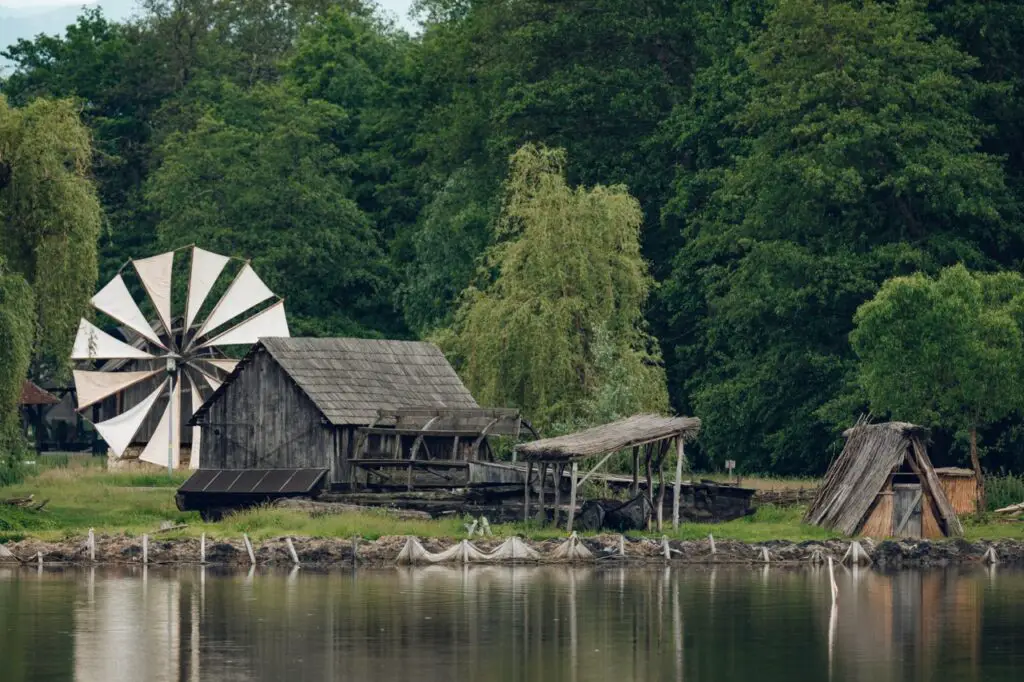This post may contain affiliate links. At no cost to you, purchases made through these links may result in a small commission for Traveling Transylvania. We never recommend products that we don’t know and trust. Thank you for your continued support!
Sibiu, the jewel of Transylvania, holds a special place in my heart. As an American woman who found herself living in this enchanting Romanian city during the tumultuous days of the 2020 Covid lockdown, I had the privilege of discovering its hidden treasures and experiencing its resilient spirit firsthand. Now, whenever I crave a dose of history, culture, and sheer beauty, Sibiu calls me back. And my favorite destination within this charming city? The Astra Village Museum.
Picture cobblestone streets, pastel-hued houses, and a bustling town square, and you’ve got a glimpse of what makes Sibiu unforgettable. But it’s not just the city center that captures your imagination. Nestled on the outskirts of Sibiu lies the Astra Village Museum, a cultural oasis that takes you on a mesmerizing journey through time.
This article is my ode to Sibiu’s not-so hidden gem, the Astra Village Museum – one of the best things to do in Sibiu. Whether you’re planning a future visit or simply indulging in some armchair travel, I’m here to be your guide, drawing on my personal experiences and deep affection for this incredible place.
Before we dive into the immersive world of the Astra Village Museum, let’s cover the practicalities. You’ll need to know how to get there, what to expect in terms of admission, and the museum’s opening hours. So, lace up your virtual walking shoes, because we’re about to embark on a journey through history, tradition, and Romanian hospitality at its finest.
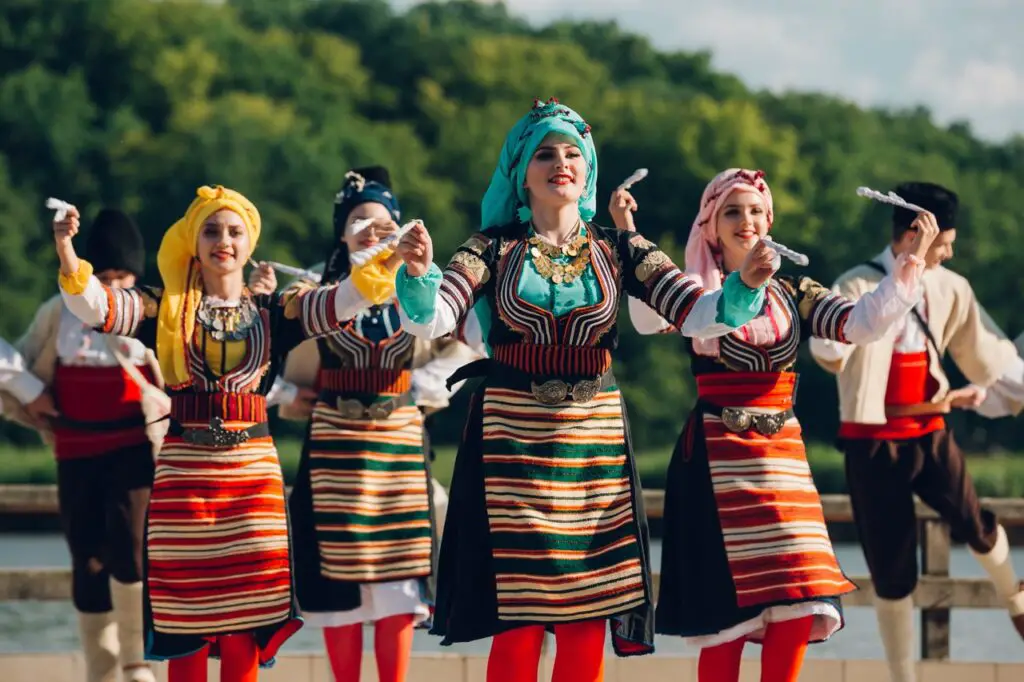
Practical Information
Now that you’re all set to explore the Astra Village Museum, let’s delve into the nitty-gritty of practical details to ensure a seamless visit.
Opening Hours
The Astra Museum welcomes visitors throughout the year, offering different opening hours to suit the season. During the bustling season, which runs from May to October, you can immerse yourself in the museum’s wonders from 08:00 in the morning until the sun dips below the horizon at 20:00.
In the off-season, from November to April, when Sibiu dons its serene winter coat, the museum’s hours are slightly adjusted. You can wander through its exhibits from 09:00 to 17:00.
Keep in mind that the Astra Museum may host special events beyond these regular hours, often at twilight or under the starry night sky, offering a unique experience of Romanian culture.
Don’t hesitate to check their Facebook page or download the ASTRAMuseumApp on your Android or iOS device for the latest event updates.
Location & Contact
The Astra Village Museum nestles in the picturesque surroundings of Sibiu, awaiting your discovery at:
Address: str. Pădurea Dumbrava, nr. 16-20
If you need to reach out for more information or have inquiries, don’t hesitate to get in touch:
Website: Astra Museum Website
Email: office@muzeulastra.com
Phone: +4 0756 085 794
Admission
Now, let’s talk about getting through those charming museum gates. Adult tickets are priced at a reasonable 35 lei (approximately $7 USD), allowing you to wander freely through time and culture. The good news is that children under the age of 6 enjoy free admission, making it an ideal family destination.
The Astra Museum Sibiu is considerate of various demographics. They offer discounts for students, disabled adults, and seniors. So, regardless of your age or circumstances, this museum aims to ensure that everyone can partake in its cultural tapestry.
Getting Around the Museum
For a truly immersive experience along the museum’s winding paths, you have a selection of unique transport options, depending on the season.
- Horse-Drawn Carriage: This timeless mode of transportation is available year-round, offering a leisurely and scenic way to explore the museum’s exhibits.
- Horse-Drawn Sleigh: When winter blankets the museum’s paths in a glistening layer of snow, you can embrace the magic of the season by opting for a horse-drawn sleigh ride.
- Conventional or Electric Scooters: During the summer season, you can zip around the museum on conventional or electric scooters, adding an element of fun and convenience to your visit.
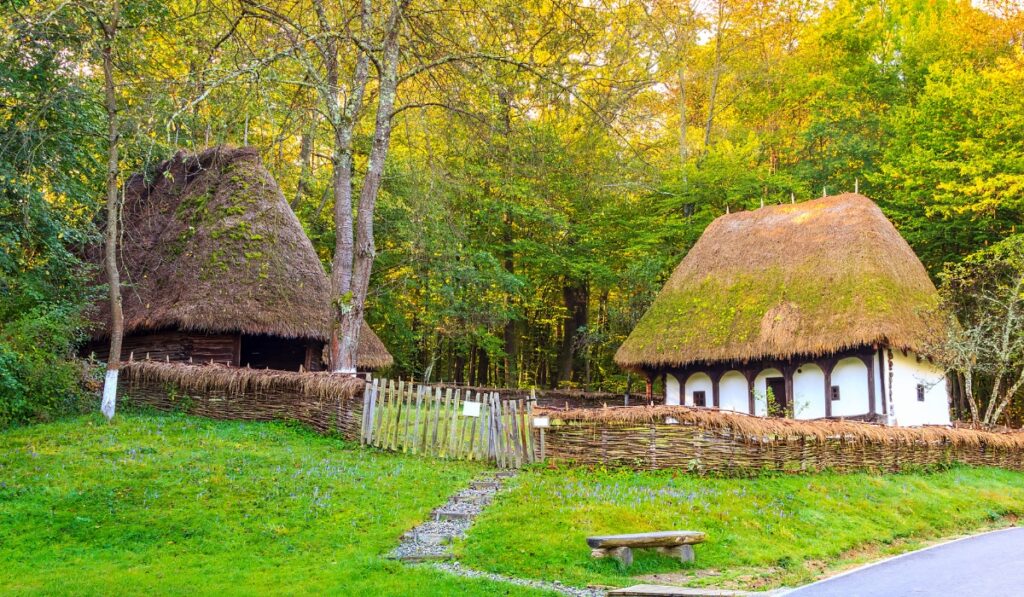
History & Significance of the Sibiu Astra Museum
The story of the Astra Village Museum is a tale steeped in history and cultural dedication, a testament to the enduring spirit of Romanian heritage preservation. As you wander through the open-air museum’s charming exhibits, understanding its rich backstory adds a layer of appreciation to your visit.
The roots of the Astra Village Museum trace back to the late 19th century when the Romanian cultural association ASTRA envisioned a haven for preserving the nation’s past. In 1897, this vision materialized into a concrete plan to establish a museum dedicated to Romanian civilization. The aim was clear: to create a sanctuary that could shelter and safeguard the treasures of Romanian culture.
The dream came to fruition in 1905 when, under the diligent supervision of Cornel Diaconovici, the museum was officially opened. Its inaugural home was none other than the ASTRA Palace in Sibiu, a building brought to life through a public subscription drive specifically for the purpose of creating this museum. This marked the genesis of the Astra Village Museum, which would later become a beacon of Romanian cultural heritage.
In 1929, a significant development occurred in Cluj, with the establishment of an open-air Ethnographic Museum of Transylvania. This step forward in preserving cultural heritage laid the foundation for similar ventures in Romania. In 1932, the Village Museum was unveiled in Bucharest under the guidance of Dimitrie Gusti.
Transition & Evolution
However, history took an unexpected turn in 1940, when Northern Transylvania was ceded to Hungary as a result of the Second Vienna Award. In response to this territorial loss, a proposal emerged to create a new ethnographic museum in Sibiu, effectively replacing the one in Cluj.
Yet, the winds of World War II and the subsequent rise of Romania’s communist government delayed the realization of this ambitious plan by two decades. During this period, the original ASTRA Museum faced closure due to ideological reasons.
The turning point came in the late 1950s and early ’60s when Cornel Irimie’s tireless efforts caught the attention of the Romanian Academy. The decision was made to resolutely pursue the establishment of an open-air museum in Sibiu, with folk technology as its central theme.
In 1963, the Folk Technology Museum was officially born, representing a deep commitment to preserving the essence of Romanian life and culture. It was not until 1967 that this cultural gem was unveiled to the public. Over the years, the museum underwent significant expansion and transformation.
From 1971 onwards, the museum began to broaden its focus, embracing not just technology but the entire tapestry of folk civilization. Houses and community buildings became integral components of the museum’s exhibits, painting a vivid picture of Romanian life through the ages.
A Museum Complex Takes Shape
Since 2001, the Astra Village Museum has evolved into a museum complex, housing the “Franz Binder” Museum of Universal Ethnography and the “ASTRA” Museum of Transylvanian Civilization, both inaugurated in 1993. The “Emil Sigerus” Museum of Saxon Ethnography and Folk Art, opened in 1998, further enriched the cultural landscape.
In 1990, the museum proudly reclaimed its heritage by adopting the name “ASTRA,” reflecting its deep roots and commitment to preserving Romanian culture.
Today, as you walk through the Astra Village Museum’s enchanting pathways, you are not just strolling through history; you are meandering through the heart and soul of Romanian heritage—a testament to the dedication and resilience of those who envisioned a “shelter for keeping the past” and brought it to life for generations to come.
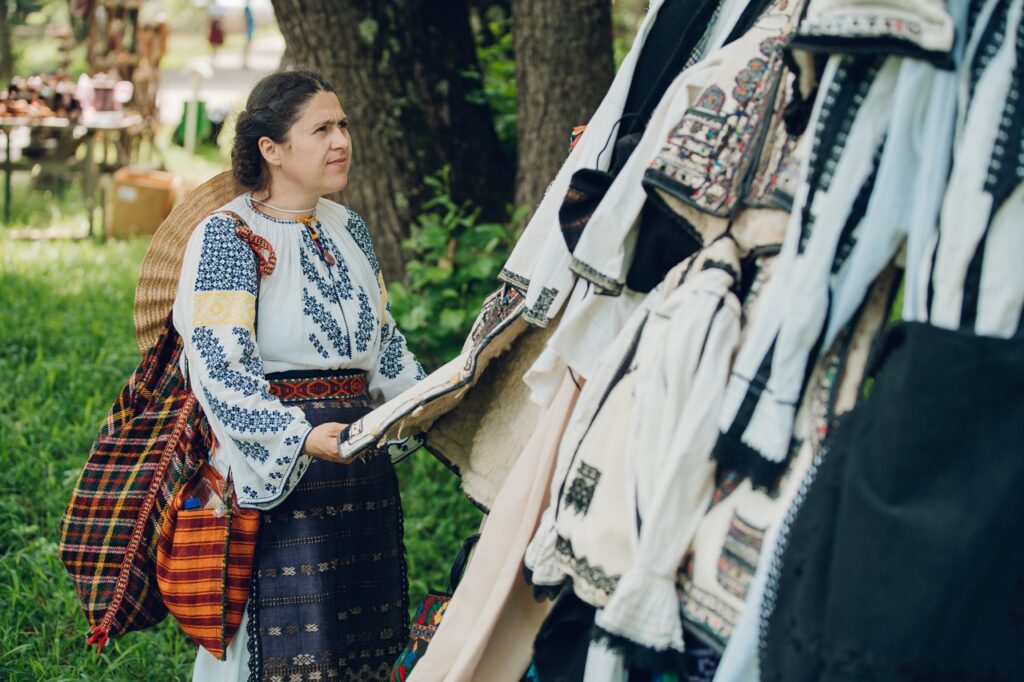
Exhibits & Attractions
As you venture into the heart of the Astra Village Museum, you’ll discover an expansive wonderland that captures the essence of traditional Romanian life and culture. This sprawling open-air museum, located just 4 km south of Sibiu amidst the enchanting Dumbrava Forest, offers a truly immersive experience like no other.
Spanning an impressive 0.96 square kilometers, the Astra Village Museum stands as the largest open-air museum in Romania and ranks among the most extensive in Central and Eastern Europe. The vastness of this cultural treasure trove becomes apparent as you wander through its meticulously curated exhibits, which feature over 300 houses and various buildings nestled amid the forested landscape, connected by over 10 kilometers of picturesque walkways.
The exhibits within the museum are thoughtfully organized into six thematic groups, each offering a unique window into the intricate tapestry of traditional Romanian life:
- Food Production and Animal Husbandry: Gain insights into the agrarian roots of Romanian society, exploring how food was cultivated and animals were raised to sustain rural communities.
- Production of Raw Materials: Delve into the crafts and skills that enabled communities to create essential materials for daily life, from textiles to tools.
- Means of Transportation: Witness the evolution of transportation methods that facilitated connectivity and trade in Romania’s past.
- Manufacture of Household Objects: Explore the artistry and craftsmanship that went into crafting everyday household items, revealing the creativity of the people.
- Public Buildings: Step into the heart of rural community life through public buildings, gaining an understanding of the shared spaces that brought people together.
- An Exposition of Monumental Sculpture: Admire the artistic achievements of Romanian sculptors, whose works adorn the museum, adding a touch of grandeur to the rustic landscape.
Popular Sites to Visit
While every corner of the Astra Village Museum offers a captivating glimpse into Romanian heritage, some exhibits stand out as particularly remarkable:
- Dobrudja Windmills: A group of windmills from the Dobrudja region captivates with its rustic charm and timeless functionality.
- Păltiniş Monastery Popice Area: Discover a playing area for popice, a historic precursor to modern bowling, offering a glimpse into pastimes of a bygone era.
- Apuseni Mountains Small Mine: Step into a small mine from the Apuseni Mountains, shedding light on the mining heritage of the region.
- Danube Delta Fishery: Transport yourself to the tranquil landscapes of the Danube Delta, where a fishery nestled among windmills provides a picturesque view
- Homes of Shepherds: Explore traditional shepherd’s dwellings, where the rhythm of pastoral life comes to life.
- Craft Workshops: Gain insights into the artistry of pottery workshops, iron workshops, and other crafts that sustained rural communities.
- A Wooden Church: The museum proudly houses a wooden church from northern Transylvania, offering a glimpse into Romania’s religious heritage.
The Astra Village Museum isn’t just a static display; it’s a living testament to Romanian culture. Throughout the year, a vibrant tapestry of festivals and fairs comes to life within these serene woods. Among them, “The Folk Craftsmen’s Fair” during the middle of August is a crowd favorite, where traditional crafts and artisanal delights take center stage.
The concept of the open-air museum is nothing short of fascinating. Homes are meticulously arranged by region, yet the layout ensures that the museum never feels crowded. You can explore the homesteads at your own pace, perhaps riding a bicycle, or simply relaxing by the lakeshore, soaking in the view.
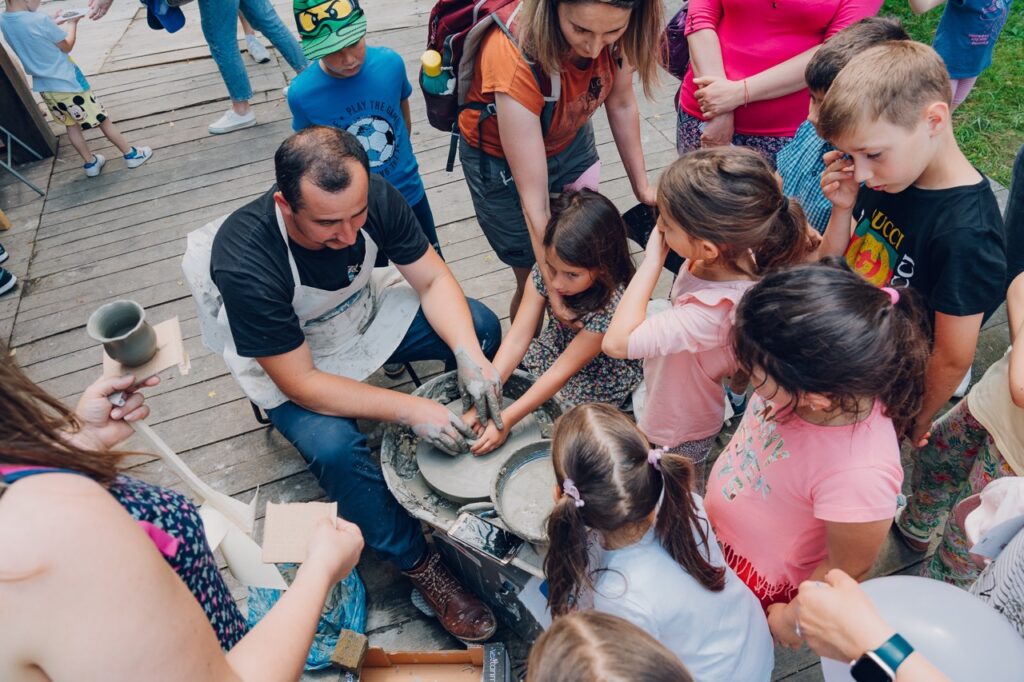
Cultural Events
The Astra Village Museum is not merely a static collection of exhibits; it’s a living testament to the vibrant culture and traditions of Romania. This open-air haven is a source of personal enrichment, offering visitors a unique opportunity to delve deep into Romanian and national minority values and identities.
One of the most enchanting aspects of the ASTRA experience is its dynamic calendar of cultural events. Whether you’re exploring the open-air exhibition, participating in traditional celebrations, or immersing yourself in a festival, each event is a journey of discovery and enrichment.
Music, Dance, and Gastronomy
During these events, you have the chance to explore the essence of local culture, crafts, and traditions through the arts. Music and dance performances captivate your senses, transporting you into the heart of Romanian folklore. The scent of specific gastronomy fills the air, tantalizing your taste buds with traditional flavors and culinary delights.
Interaction with Folk Craftsmen
What sets these events apart is the opportunity to interact with folk craftsmen, true masters of their trade. These artisans generously share their knowledge, weaving stories of history and cultural values into their craft. It’s a chance to witness the living heritage of Romania, as skilled hands create intricate works of art before your eyes.
Recent Events
To offer you a glimpse into the richness of cultural events at the Astra Village Museum, here are a couple of recent highlights:
Costumes and Collections in the Context of Heritage: The museum hosted a symposium that explored the significance of costumes and collections within the context of heritage. It was a gathering of minds dedicated to preserving and understanding the cultural wealth of Romania.
Researchers’ Night at Astra Museum – The World of Bees Under the Magnifying Glass: A fascinating event allowed visitors to explore the intricate world of bees, an essential part of Romania’s natural heritage. From 16:00 to 20:00, participants delved into the world of these pollinators and their vital role in the ecosystem.
School in the Traditional Village – Workshop of Toys Made of Cloths: An educational initiative in the Etno Tehno Parc area showcased the art of crafting toys from cloth materials. It was an immersive experience where participants learned traditional skills while deepening their connection to Romanian culture.
These events are just a glimpse into the vibrant tapestry of cultural riches that the Astra Village Museum offers. Whether you’re passionate about history, art, music, or simply the joy of discovery, these gatherings provide a window into Romania’s soul.
As you explore the open-air exhibits and participate in these cultural celebrations, you’re not just a spectator; you become a part of the living history and traditions that continue to shape Romania’s identity. Each event at the Astra Village Museum is a stepping stone on a journey of cultural enlightenment and a deeper understanding of this remarkable nation.
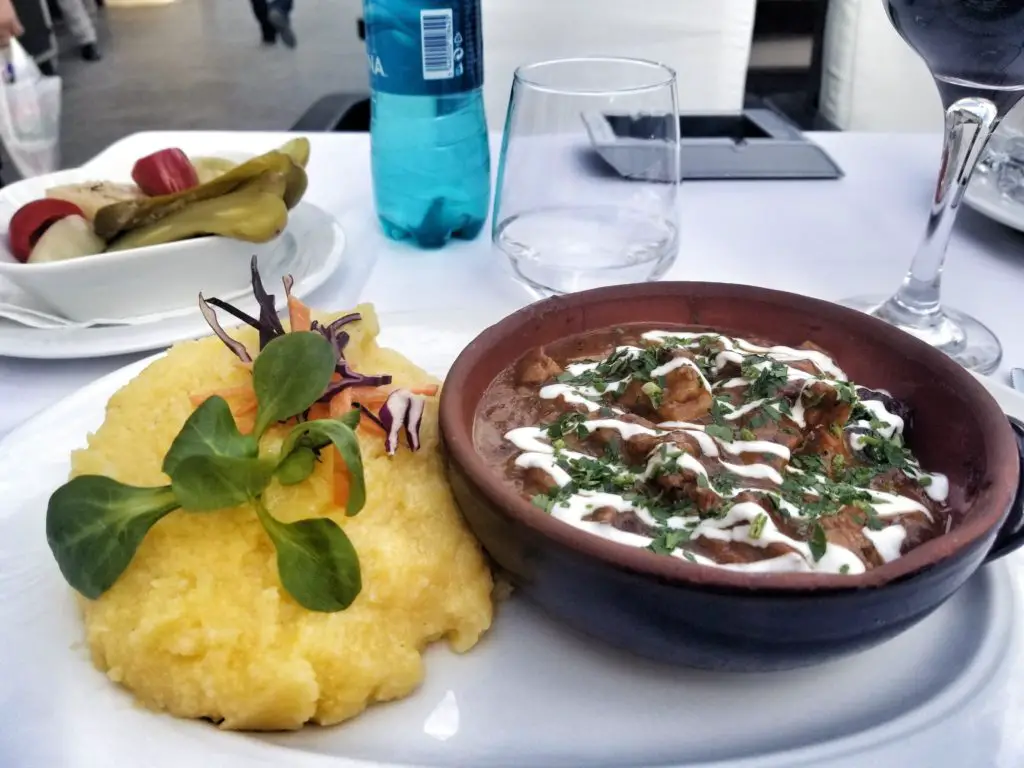
Where to Eat at Astra Park Sibiu
Cultural Café: Sip and Savor
After a captivating journey through the Astra Village Museum’s exhibits, you’ll likely be in need of a refreshing break. Look no further than the “Cafeneaua Culturală,” a charming haven where you can rejuvenate your spirits.
Here, you can indulge in a steaming cup of tea, a meticulously brewed coffee, or savor the flavors of traditional pies and gingerbread, prepared from time-honored recipes. These delightful treats are a homage to the culinary heritage of Romania, offering a taste of the past.
Traditional Dining: A Culinary Adventure
When it’s time for a hearty meal, the Astra Village Museum provides not one but two restaurants that beckon you to savor the authentic character of traditional Romanian cuisine.
Cârciuma din bătrâni: Nestled within the heart of the museum, this petite, rustic restaurant exudes old-world charm. Inside, a small but dynamic kitchen bustles with activity, as waiters weave through the tables carrying trays laden with special delights. Ileana, the skilled cook, channels the culinary wisdom of generations past, creating local dishes using traditional pots and kitchen tools. It’s a gastronomic journey back in time, where wines and traditional spirits, cheeses, sausages, bacon, pork rind, and zacusca burst with flavors reminiscent of yesteryears.
Hanul din Tulgheș: Originally built in 1922, the Tulgheș Inn found its new home in Sibiu in 1991, thanks to the Astra Museum of Traditional Civilization. Today, it proudly serves Romanian delicacies crafted from high-quality ingredients. It’s a place where culinary traditions thrive, and the legacy of Romanian cuisine continues to flourish.
Country Fair: A Weekend Treat
On weekends, the museum’s “Târgul de Țară” transforms into a bustling country fair, offering an array of delectable pancakes and dishes cooked right before your eyes. You can choose to savor your lunch in the rustic charm of wooden benches, adding to the authentic atmosphere.
Whether you’re seeking a quick pick-me-up, a leisurely meal, or the joy of tasting traditional Romanian dishes, the Astra Village Museum ensures that your culinary journey through history is as enriching as your exploration of its exhibits. And when you return to Sibiu proper and are looking forward to a delicious meal, be sure to check out our post on the best places to eat in Sibiu.
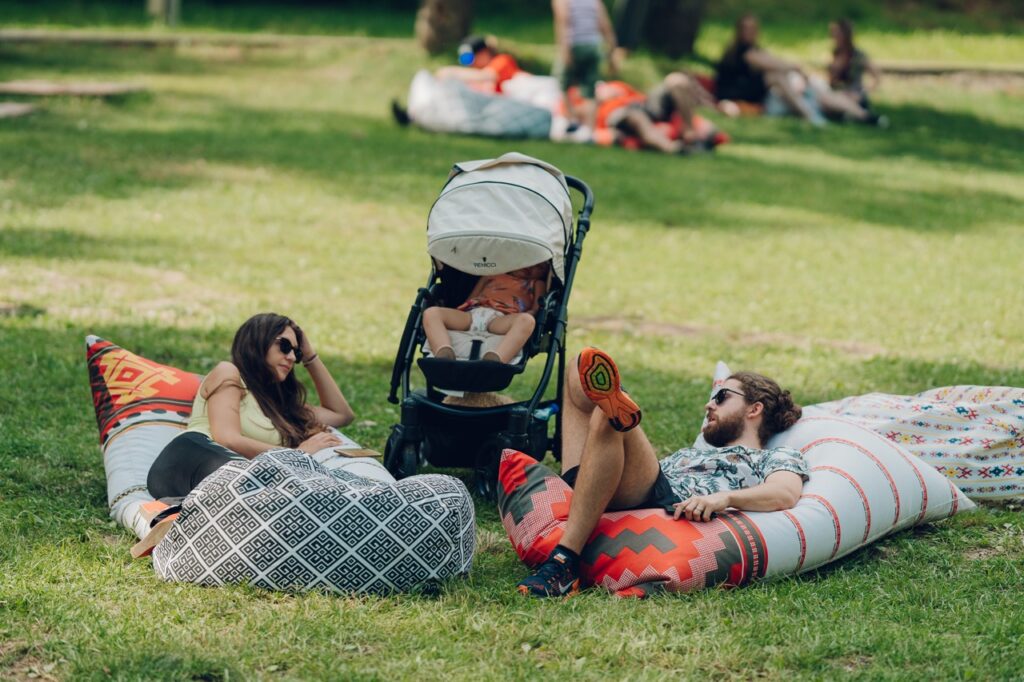
Tips for Visiting Muzeul Astra Sibiu
As you embark on your adventure to the ASTRA Museum, here are some valuable tips to ensure you make the most of your visit:
1. Download the ASTRA Museum App
Enhance your experience by downloading the official ASTRA Museum App from the App Store or Google Play. With 30 audio files detailing the stories behind various sights, you’ll gain fresh insights into mills, memorial houses, households, and workshops. This digital companion is your key to a deeper understanding of the museum’s treasures.
2. Timing is Flexible
The beauty of the ASTRA Museum lies in its versatility. Whether you visit during the snow-blanketed charm of a horse-drawn sleigh ride or the vibrant seasons of spring and fall, there’s no wrong time to explore. Each season unveils a unique facet of the museum’s allure.
3. Plan for a Day
Given its far-ish proximity from Sibiu’s center and expansive size, plan to spend a substantial amount of time at the museum. The ASTRA Museum spans an impressive 96 hectares, with the actual exhibition space, comprising over 300 buildings, covering 42 hectares. It’s a vast canvas of culture waiting to be explored, so allocate ample time for your visit.
4. Explore the Mills
Within the museum’s expansive grounds, you’ll encounter a remarkable treasure—the world’s richest collection of mills. Don’t miss the opportunity to immerse yourself in the history and mechanics of these iconic structures. Each mill has its own story to tell, adding depth to your visit.
5. Wear Comfortable Shoes
Given the extensive walkways and diverse terrain, comfortable footwear is essential for an enjoyable visit. Whether you’re meandering through exhibits or wandering along the lakeshores, comfortable shoes will ensure you can explore to your heart’s content.
6. Capture Memories
With such breathtaking surroundings and rich cultural displays, the ASTRA Museum is a photographer’s paradise. Don’t forget to bring your camera or smartphone to capture the moments that resonate with you. The picturesque landscapes and captivating exhibits are sure to provide ample opportunities for memorable photos.
7. Immerse Yourself
Finally, allow yourself to fully immerse in the experience. Engage with the folk craftsmen, savor traditional flavors, and let the stories of Romanian heritage unfold before you. The ASTRA Museum is not just a place to visit; it’s a journey into the heart of Romania’s culture and history.
As you venture through this expansive open-air museum, remember that each step is a discovery, each moment a connection to the past. Embrace the cultural richness and natural beauty that surrounds you, and your visit to the ASTRA Museum will be an unforgettable experience.
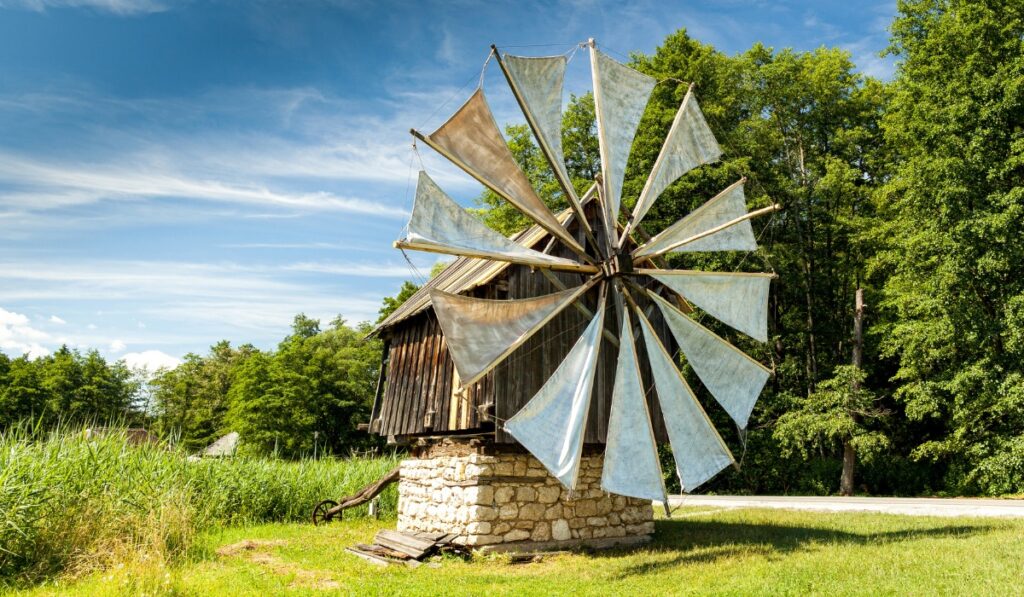
Ready for Your Visit to Sibiu’s Astra Museum?
As we conclude our journey through the Astra Village Museum in Sibiu, it’s clear that this cultural gem is not just a destination; it’s an experience that transcends time and place. Nestled amidst the Dumbrava Forest, this open-air museum invites you to step into the heart of Romanian heritage, offering a tapestry of exhibits, cultural events, and culinary delights.
From the world’s richest collection of mills to the immersive storytelling of the official ASTRA Museum App, every corner of this vast museum beckons you to explore, learn, and connect with the past. Whether you visit in the enchanting embrace of winter, the bloom of spring, or the golden hues of autumn, there’s never a wrong time to uncover the treasures of the Astra Village Museum.
Remember to allocate plenty of time for your visit, as this expansive museum spans 96 hectares, with over 300 buildings across 42 hectares of exhibition space. Wear comfortable shoes, bring your camera to capture memories, and savor traditional dishes at the charming on-site restaurants.
As you wander through this living heritage, you’ll not only discover the fascinating history of Romania but also understand the essence of its cultural identity. The Astra Village Museum is an embodiment of the spirit of Sibiu and a testament to the enduring legacy of Romanian traditions.

